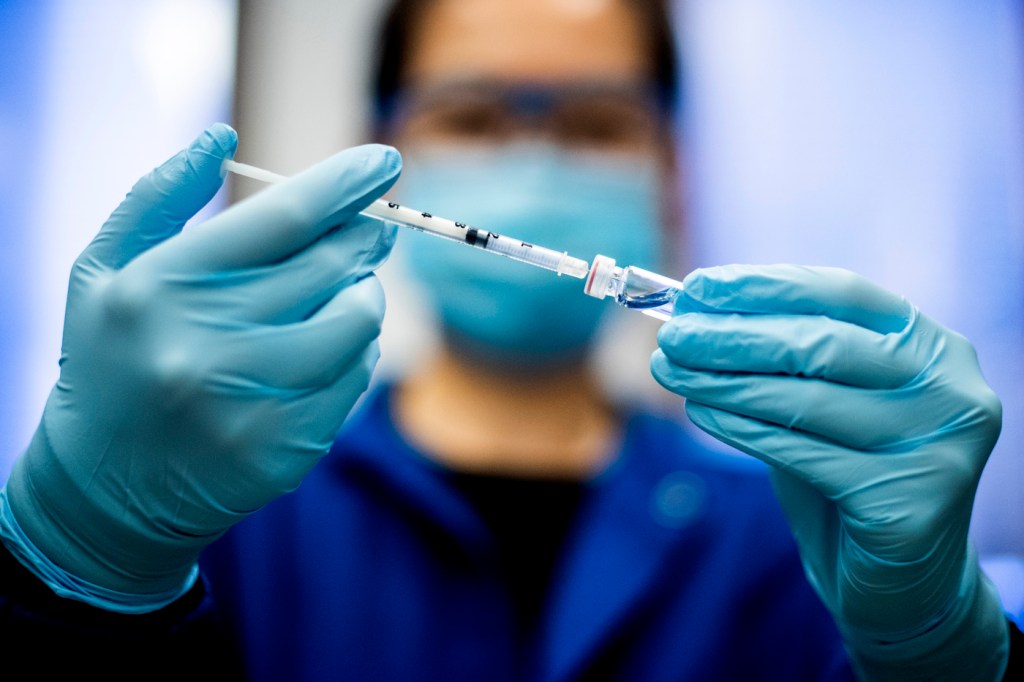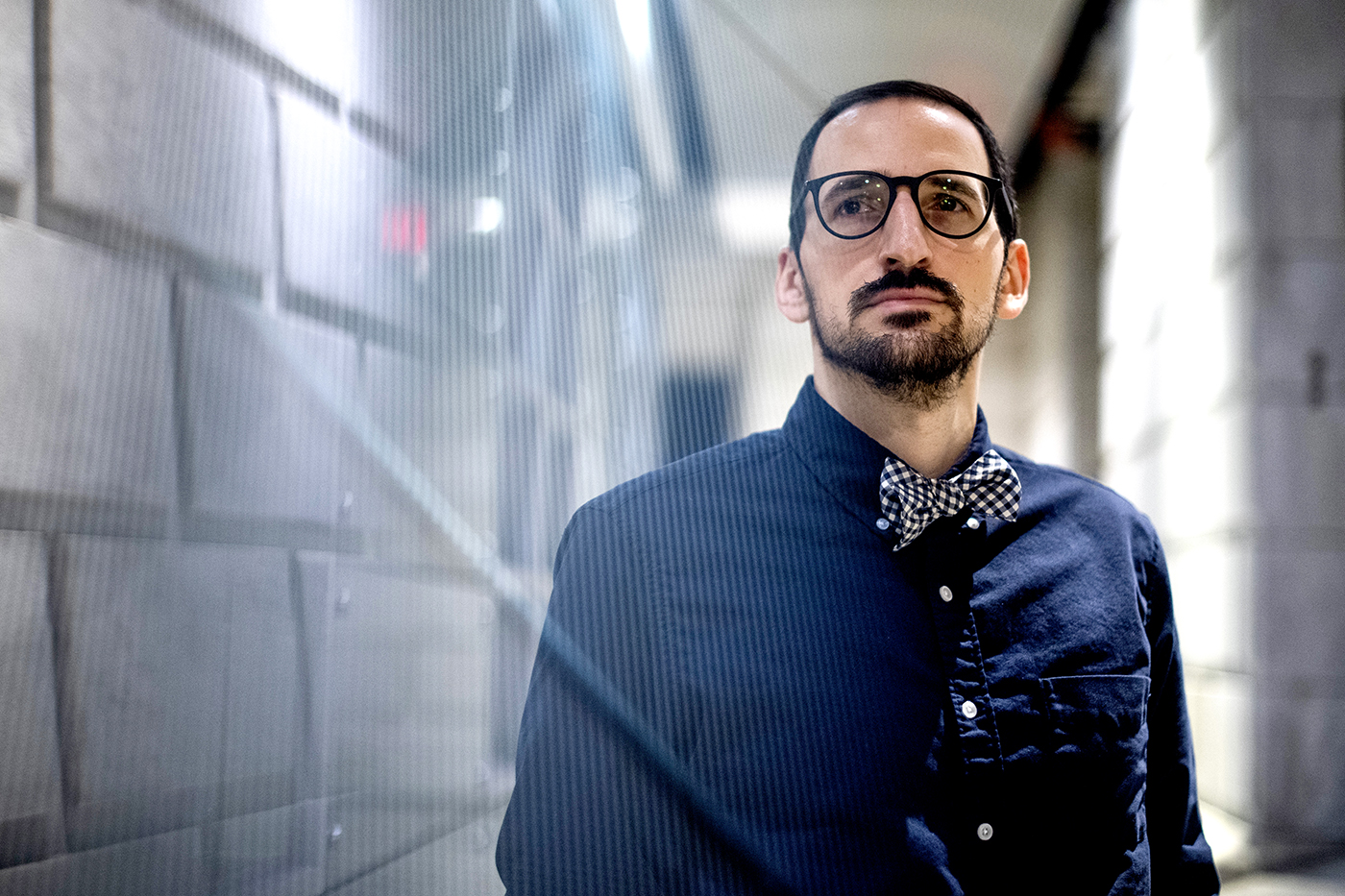A COVID-19 vaccine won’t mean a swift end for wearing masks or physical distancing

For months, researchers around the world have been rushing to develop and test a vaccine that can once and for all help end the COVID-19 pandemic.
But the emergence of a vaccine won’t put an end to the need for masking, physical distancing, and other effective interventions that slow the spread of the coronavirus—at least, not for a long while, says Brandon Dionne, an assistant clinical professor of pharmacy and health systems sciences at Northeastern.

Brandon Dionne, Assistant Clinical Professor Department of Pharmacy and Health Sciences. Photo by Matthew Modoono/Northeastern University
Pharmaceutical experts expect at least one vaccine to be approved for safe and effective use by 2021. After that, a set of manufacturing and distribution hurdles await a vaccine that will need to be distributed to more than 7.5 billion people worldwide.
Even when one or more vaccines become available, Dionne says, people should remain cautious and continue to engage in protective measures outlined by public health experts.
“In the early stages of the vaccine rollout, I don’t think that a vaccine should change anyone’s behaviors,” he says. “We’re still going to need to use that in conjunction with masks, social distancing, and hand hygiene—like we’ve been doing—until we have more information about how [a vaccine] actually affects transmission.”
Currently, several pharmaceutical companies are racing to produce and test different types of vaccines with clinical trials. Those studies also entail a post-approval surveillance period in which scientists monitor the effects of the vaccines for months after they reach the market. After those vaccines are approved to be safe and effective, scientists will still need time to monitor the efficacy, or level of protection against the coronavirus, that the vaccines can actually provide.
The U.S. Food and Drug Administration in June established that the efficacy of new COVID-19 vaccines will need to be 50 percent during Phase 3 clinical trials in order to be approved for use in the United States. Beyond that, scientists don’t have a robust way to routinely test for the protections new COVID-19 vaccines might offer in the real world, Dionne says.
“If you’re targeting 50 percent efficacy, that means that 50 percent of people aren’t having an adequate response to the vaccine,” Dionne says.
In other words, even if you receive the vaccine, it will be difficult to determine whether it actually provides immunity. The questions that will still need to be answered after vaccines roll out also include whether they will offer long-term protection against the coronavirus.
“Until we answer those questions, we really can’t rely on a vaccine to be the silver bullet that will completely provide protection and get us to that herd immunity level where we can abandon all other strategies for preventing transmission of the virus,” Dionne says.
Governments and organizations around the world have tried to slow and prevent the transmission of the coronavirus with strategies that range from wearing masks and reducing close contact with others, to implementing robust systems of testing and contact tracing.
To caution against thinking of a potential vaccine as a universal remedy for the pandemic, Dionne asks people to think of different preventive strategies as slices of Swiss cheese, which have holes in them.
If each different precaution is a cheese slice, the holes in it will keep it from being a solution on its own. But when the slices are combined—as if stacked together to cover some of those holes—those preventive measures can act as a more effective barrier to help reduce transmission.
“Even if [the virus] gets through one intervention, it gets blocked by another,” Dionne says. “I view the vaccine as just another slice of cheese that hopefully blocks the holes of some other things, like mask-wearing and social distancing.”
Reports of coronavirus re-infection cases have added more questions about the kind of immunity early vaccines might offer, and whether they will be able to prevent reinfection or simply reduce the symptoms of disease.
During the early stages of distribution, scientists will need to determine whether their vaccines offer lifelong protection, as is the case with vaccines against rubella or measles, or temporary protection, as is the case with the flu vaccines that people should get once a year.
“We’ve never had a coronavirus vaccine before,” Dionne says. “A lot of this is new science and things we’re still learning about.”
But the one question to rule them all is how such vaccines might affect the transmission rates of the coronavirus, he says. For example, some patients who get the flu vaccine can still catch and spread the disease—shedding the virus to others—even if they’re protected from flu symptoms. COVID-19, which also spreads through that kind of asymptomatic transmission, poses a similar risk.
“That’s part of the whole problem with COVID-19, that a lot of people have asymptomatic spread now without a vaccine,” Dionne says. “If we have the vaccine, it may just shift the burden from symptomatic infection with COVID-19, to more of an asymptomatic but still ongoing transmission.”
For now, and after a vaccine is available, Dionne says, everyone needs to do their part in the pandemic with masks, distancing, and other healthy behaviors.
“That’s really what’s going to help break that transmission cycle and get us to the point where we can get back to some semblance of normalcy,” he says. “Until we have reached a point where globally we can prevent transmission, there’s always a risk that it could flare back up.”
For media inquiries, please contact media@northeastern.edu.





